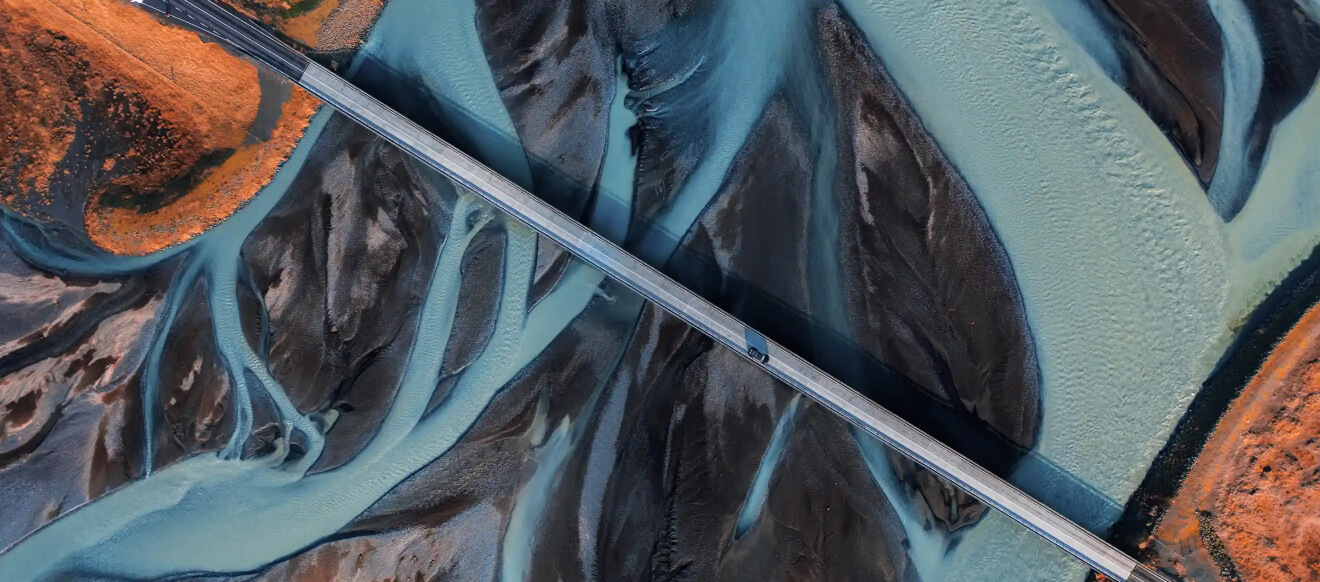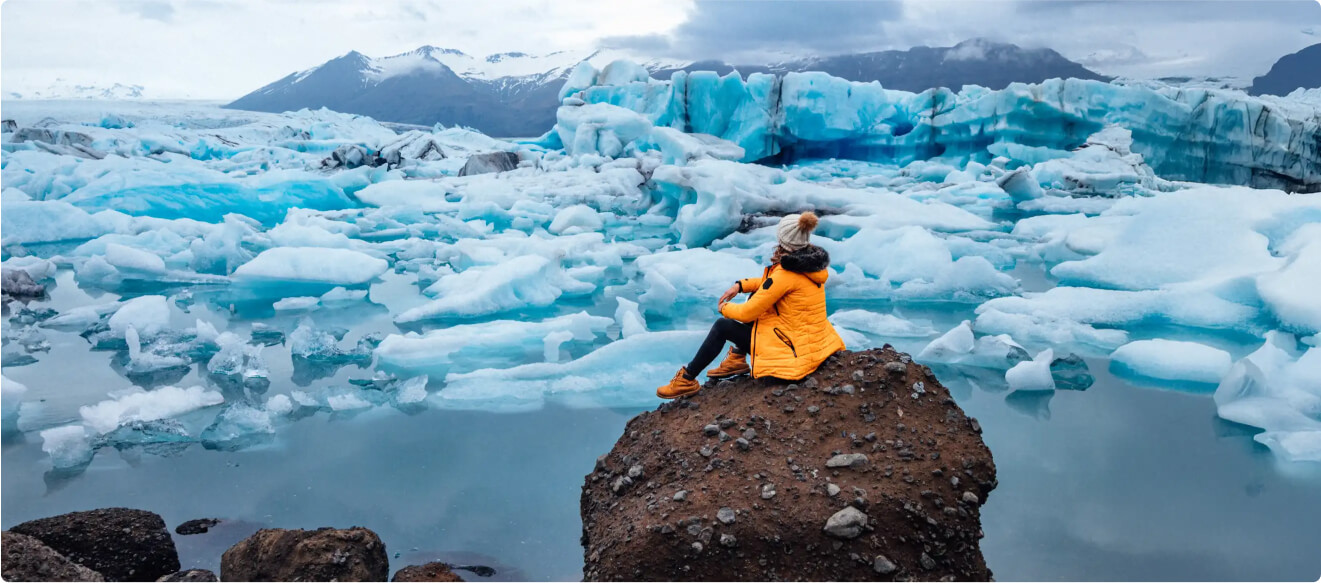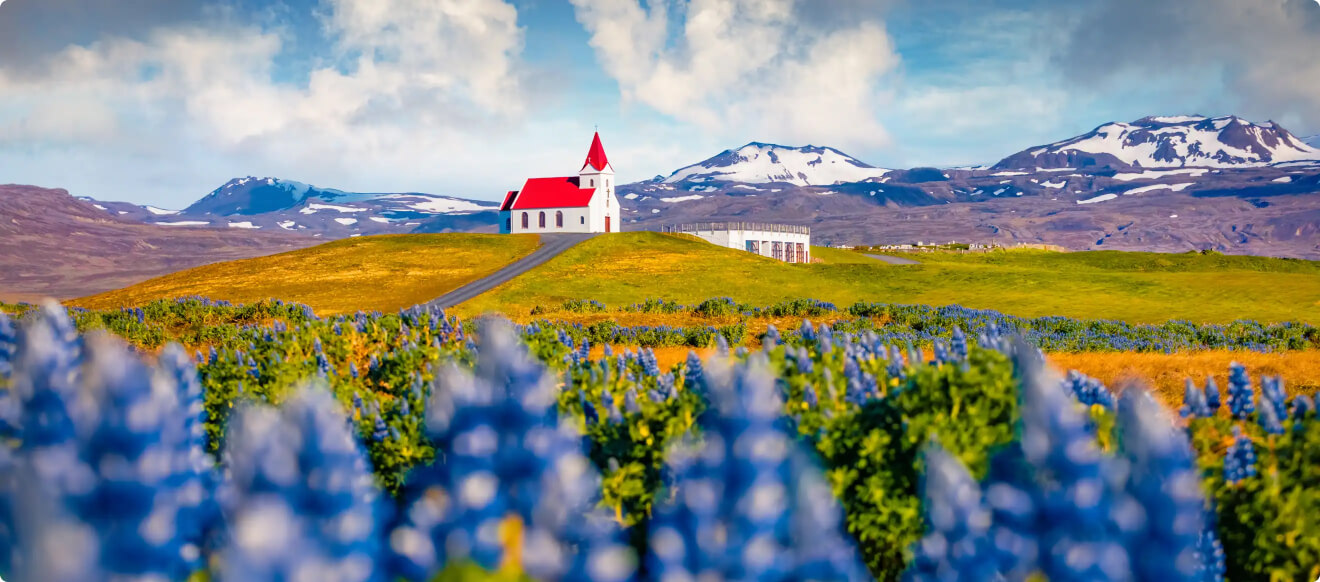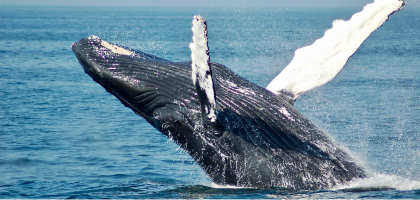If you want a unique and awe-inspiring experience, look no further than Godafoss! This majestic waterfall is located in the north of Iceland. It has captivated visitors with its breathtaking beauty since the 10th century.
Whether you hope to enjoy the stunning views or relax in its tranquil waters, Godafoss in Iceland offers something special for everyone. With plenty of nearby attractions, restaurants, and activities, it's sure to be a trip that will stay with you forever!
Top Facts about Godafoss Waterfall: What You Need to Know
Godafoss waterfall is one of the most spectacular waterfalls in Iceland. Here are some interesting facts about this majestic waterfall:
- It is located between Akureyri and Lake Myvatn in North Iceland.
- Its name translates to "Waterfall of the Gods," and it has been nicknamed accordingly.
- The waterfall is horseshoe-shaped and falls from a height of 11 meters (37 feet) over a width of 113 meters (370 feet).
- Many legends are associated with Godafoss, including one about how it got its name.
- The crystal blue hues and myths surrounding Godafoss make it one of the most magical waterfalls in Iceland.
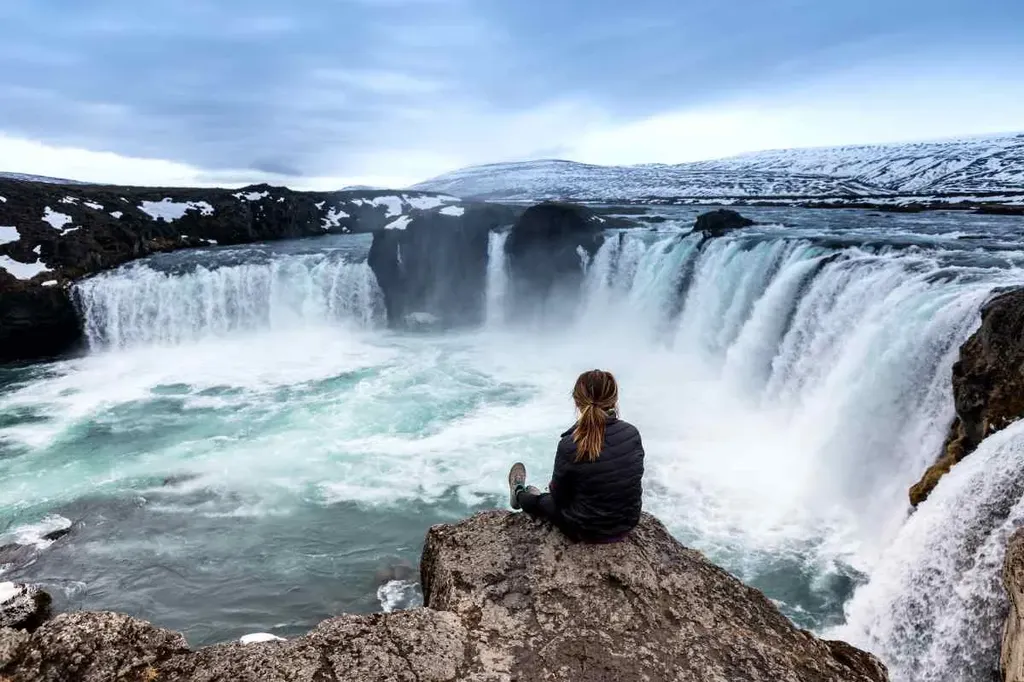
History of Godafoss
The captivating history behind the renowned ‘waterfall of the gods’ in Iceland is genuinely intriguing. According to ancient folklore, a significant symbolic act took place here. Christianity was declared the official religion in 1000 AD at this site.
Thorgeir Ljosvetningagodi, the law speaker at the time, discarded his venerated Norse god statues into the cascading waters of Godafoss as a gesture of wholehearted conversion to Christianity. This poignant moment bore witness to the cessation of paganism in Iceland and lent the waterfall its distinctive name.
Today, the breathtaking Godafoss holds great historical significance, attracting enthusiastic tourists enticed by its splendid beauty. Godafoss deserves a place on every traveler's Icelandic itinerary. And no wonder why, with enchanting crystal blue waters and unparalleled scenic views.
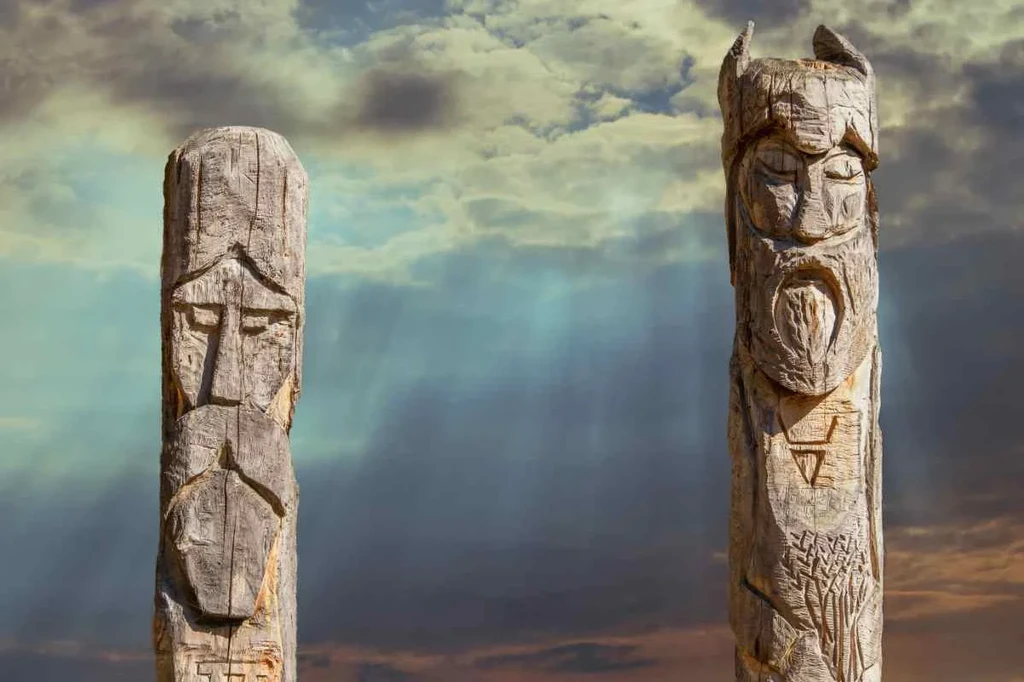
Where is Godafoss located?
The Godafoss waterfall location is in the north of Iceland. It is situated along the country's main ring road at the junction with the Sprengisandur highland road. It is one of Iceland's most spectacular waterfalls. Godafoss is approximately 422 km (262 miles) from Reykjavik.
Nearby attractions include:
- Myvatn Nature Baths - 53 km (33 miles) away
- Akureyri - 35 km (22 miles) away
- Dimmuborgir Lava Field - 49 km (79 miles) away
- Dettifoss Waterfall - 88 km (55 miles) away
- Husavik, the Capital of Whale Watching Tours - 75 km (47 miles) away
How To Get There
Driving from Reykjavik to Godafoss is a relatively easy journey. The total drive time is around 5 hours and 10 minutes, depending on traffic and weather conditions. From Reykjavik, you will need to take Route 1 east towards Akureyri.
After about 4 hours and 40 minutes of driving, you will reach the town of Akureyri. From there, continue on Route 1 for another 30-40 minutes until you reach the Godafoss waterfall car park.
If you are starting your journey from Akureyri, the drive to Godafoss is much shorter. It will only take about 40 minutes to reach the waterfall by car. Follow Route 1 east out of Akureyri until you reach the car park at Godafoss. It would be best to read our article on Things To Do In Akureyri. It's packed with information about this beautiful Icelandic city.
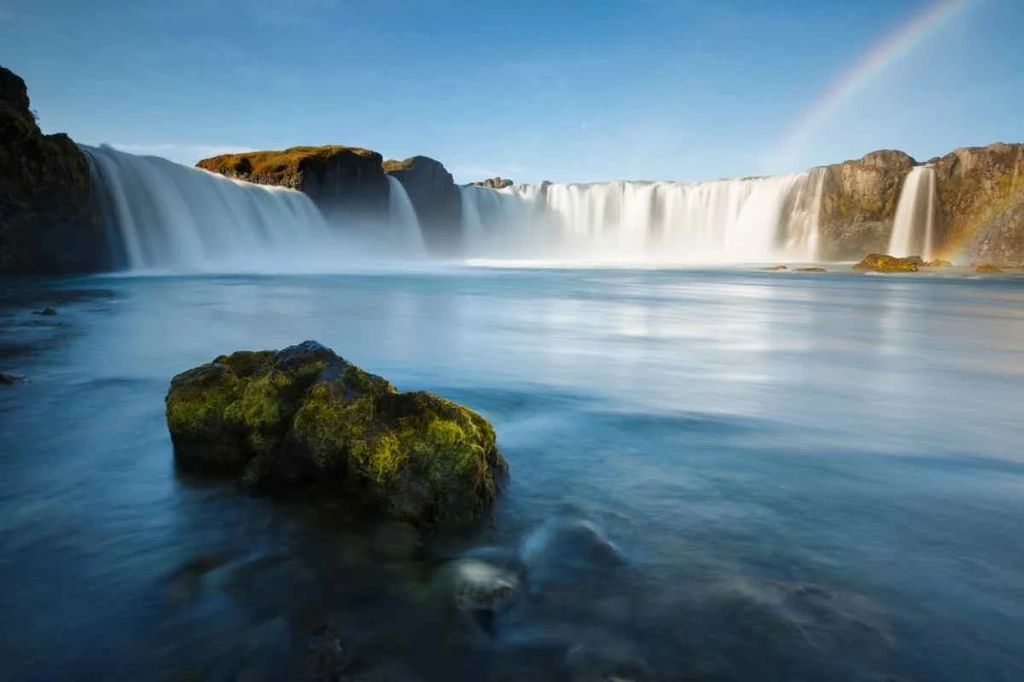
Visiting Godafoss Waterfall
Embarking on a trip to the mesmerizing Godafoss waterfall promises unparalleled beauty. And, of course, unforgettable memories.
As you wander down the easily accessible paths and steps, the impressive horseshoe-shaped Godafoss falls reveal themselves in all their glory, providing ample opportunities for stunning photographs. The west bank offers the most convenience, just a stone's throw away from one of the two parking areas.
However, the east bank rewards those willing to venture further with a unique vantage point at the base of the waterfall's basin.
How Long Does it Take to Visit Godafoss?
Immersing yourself in the breathtaking beauty of Godafoss can be an unforgettable experience. The time spent on this excursion varies depending on your preferred activities.
Spending 30 minutes to admire the grandeur of the falls and snap a few photos will suffice. But by dedicating an hour or more, you can gain a genuine appreciation for the stunning landscape and varied perspectives that come with exploring both sides of this spectacular waterfall.
A refreshing walk along the lush, verdant environment is an ideal way to enhance your experience and fully immerse yourself in one of Mother Nature's most remarkable masterpieces.
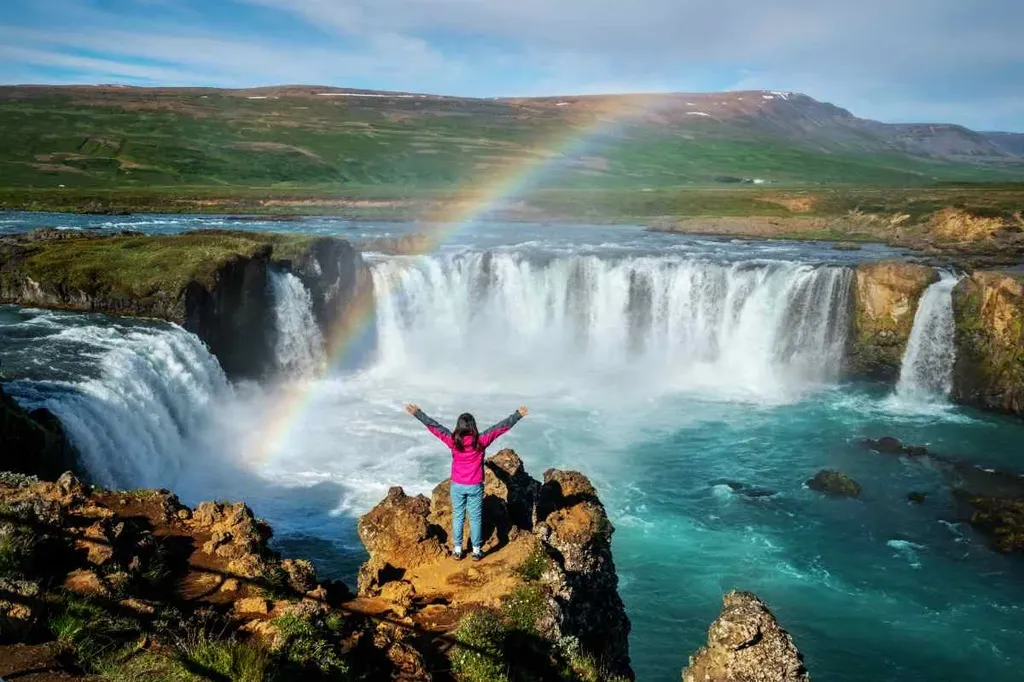
Getting Close to Godafoss
The majestic Godafoss waterfall is easily accessible by car and foot, with plenty of visitor parking spots. From here, you can take a short stroll to the viewing area, allowing you to get close enough to feel the mist of the falls on your face.
The nearby path also offers an up-close perspective of Godafoss falls, allowing you to look down into its depths and admire the surrounding landscape in all its glory. However, plenty of other vantage points exist if you prefer to stay further away from the waterfall's edge. The nearby hills and cliffs provide spectacular views of the falls from higher ground.
When Is the Best Time to Visit Godafoss?
The best time of year to visit Godafoss in Iceland depends on what you want to experience. Nevertheless, we advise visiting in the fall, as it's an ideal time to catch a glimpse of the magnificent northern lights from Godafoss.
If the northern lights are something you'd like to see, read our article, The Shiny Guide to the Northern Lights in Iceland. It's packed with information about when and where to see the aurora borealis.
Here are some more suggestions for each season:
- Spring (March-May): This is a great time to visit if you want to see the waterfall with plenty of water and lush green surroundings. The temperatures are mild, and it's usually quite sunny.
- Summer (June-August): This is the peak tourist season in Iceland, so expect larger crowds and higher prices. However, this is also a great time to visit if you want warmer weather and longer days.
- Autumn (September-November): This is a great time to visit if you want to experience the changing colors of autumn in Iceland. The temperatures are colder but still mild, perfect for outdoor hiking or camping.
- Winter (December-February): If you're looking for a unique winter experience, this is the ideal time to visit Godafoss. The temperatures can be pretty cold, but there's something magical about seeing the waterfall covered in snow or ice! Just make sure you bring the proper gear and prepare for icy roads.
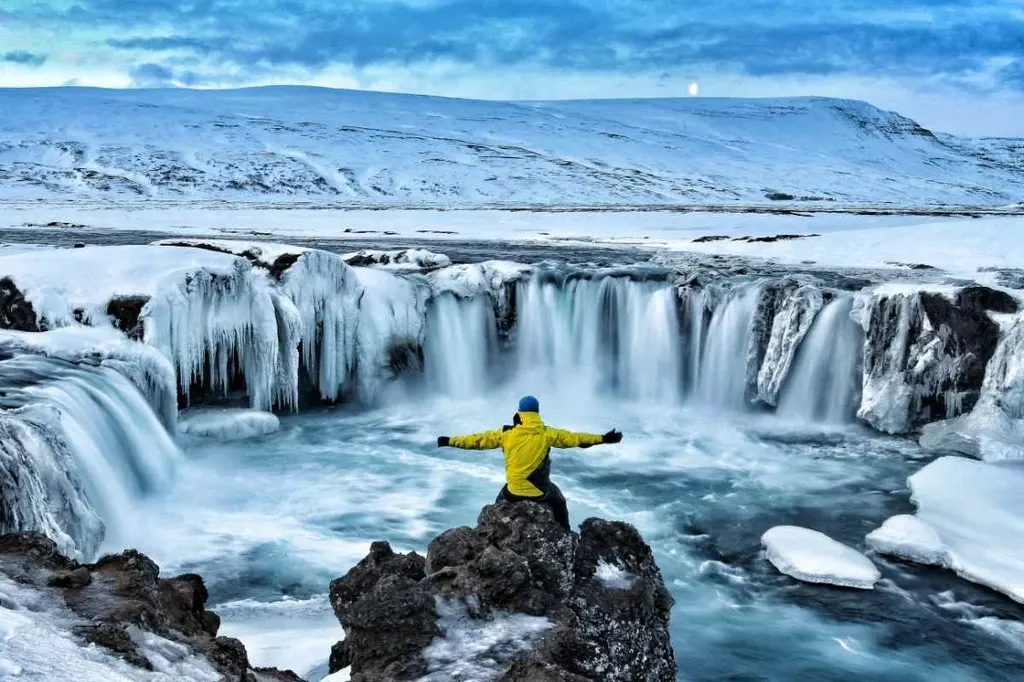
Other Tips for Visiting Godafoss Falls
Visiting Godafoss in Iceland is an experience you won't soon forget. Here are some tips to make the most of your visit:
- Dress Appropriately: Make sure to dress warmly and wear good shoes with a good grip, as the rocks around the waterfall can be slippery. It's also a good idea to bring a raincoat or umbrella in case of sudden showers.
- Plan Ahead: Check out the weather forecast before you go so that you know what kind of conditions to expect. Also, plan your route and ensure you have enough fuel for your car if you're driving there.
- Get There Early: The best time to visit Godafoss is early morning when fewer people are around, and the light is perfect for taking pictures.
- Take Your Time: Don't rush your visit - take your time to explore the area and soak up all its beauty. You'll be glad you did!
Where To Eat Nearby
If you're looking for a great place to eat near Godafoss waterfall in Iceland, here are three of our favorite restaurants near the falls:
- Dalakofinn Restaurant: This restaurant offers a unique dining experience with its traditional Icelandic dishes, always served with a smile. They also sell groceries and other local specialties.
- Daddi's Pizza: This is the place to go if you want a quick bite. Their menu features delicious pizzas and breathtaking views of the lava fields and surrounding mountains.
More Waterfalls Worth Checking Out
Godafoss in Iceland is an incredible place, but we recommend visiting other beautiful waterfalls as well if you have time. Here are a few more to get you started:
- Gullfoss Waterfall: Located in the stunning Golden Circle, Gullfoss is one of Iceland's most famous waterfalls. Its double-tiered cascade and public viewing platforms make it a popular destination for travelers.
- Haifoss Waterfall: Haifoss Waterfall is one of the tallest waterfalls in Iceland, with a height of 122 meters (400 feet). It is located near the volcano Hekla in southern Iceland and is part of Fossárdalur valley. The picturesque beauty of Haifoss is a must-see for any traveler visiting Iceland.
- Hraunfossar Waterfalls: Hraunfossar Waterfalls is a stunning natural wonder in the Hallmundarhraun lava field in Borgarfjörður bay, West Iceland. This incredible waterfall comprises over 100 miniature waterfalls streaming from the rocks into the Hvítá river below.
- Glymur Waterfall: Glymur Waterfall is Iceland's second-tallest waterfall, at 198 meters (650 feet). It is located in the fjord of Hvalfjörður and can only be accessed by hiking. The hike to Glymur Waterfall offers stunning views, scenery, rivers, and of course, the second-highest waterfall in all of Iceland.
- Svartifoss Waterfall: Svartifoss waterfall is located in Skaftafell, Iceland, and is part of the Vatnajökull National Park. It is known for its unique black basalt columns that form a natural amphitheater around the 20-meter-tall (66 feet) waterfall. Svartifoss translates to 'black falls' and is one of the most picturesque waterfalls in Iceland.
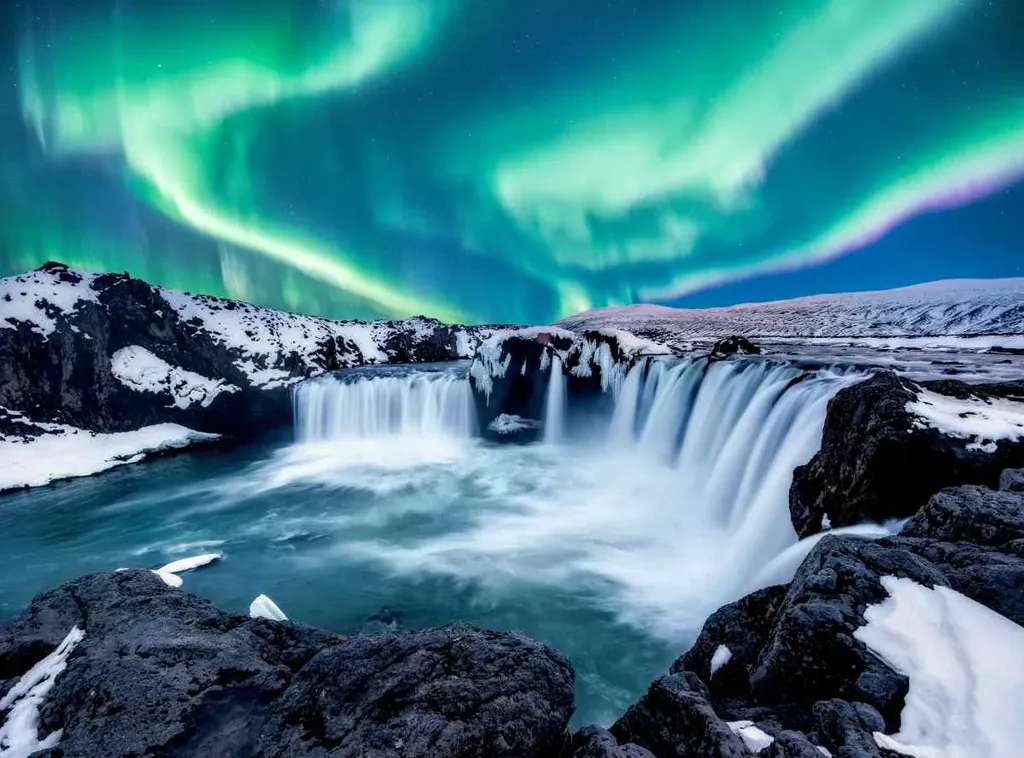
Iceland's Waterfall of the Gods
Godafoss is a breathtakingly beautiful waterfall located in northern Iceland. It's easy to reach from Reykjavík or Akureyri, and it's a must-see destination for any traveler in Iceland. From its majestic beauty to the history behind its name, Godafoss falls is an experience you won't soon forget. So, make sure to add it to your Icelandic itinerary!





